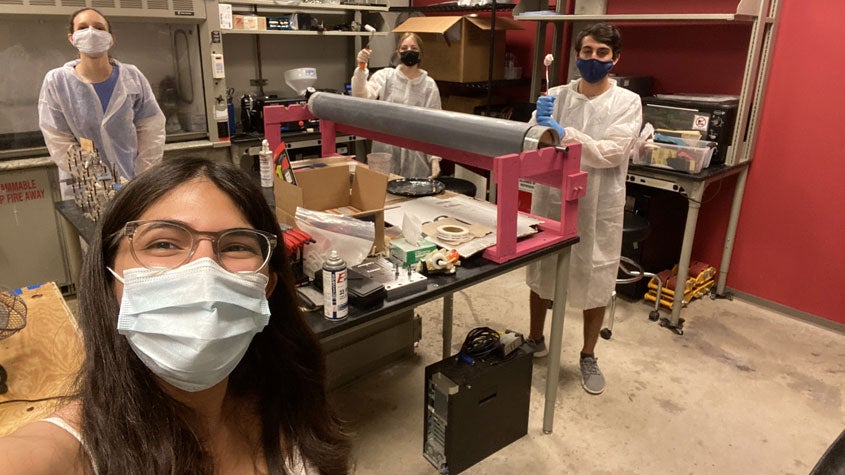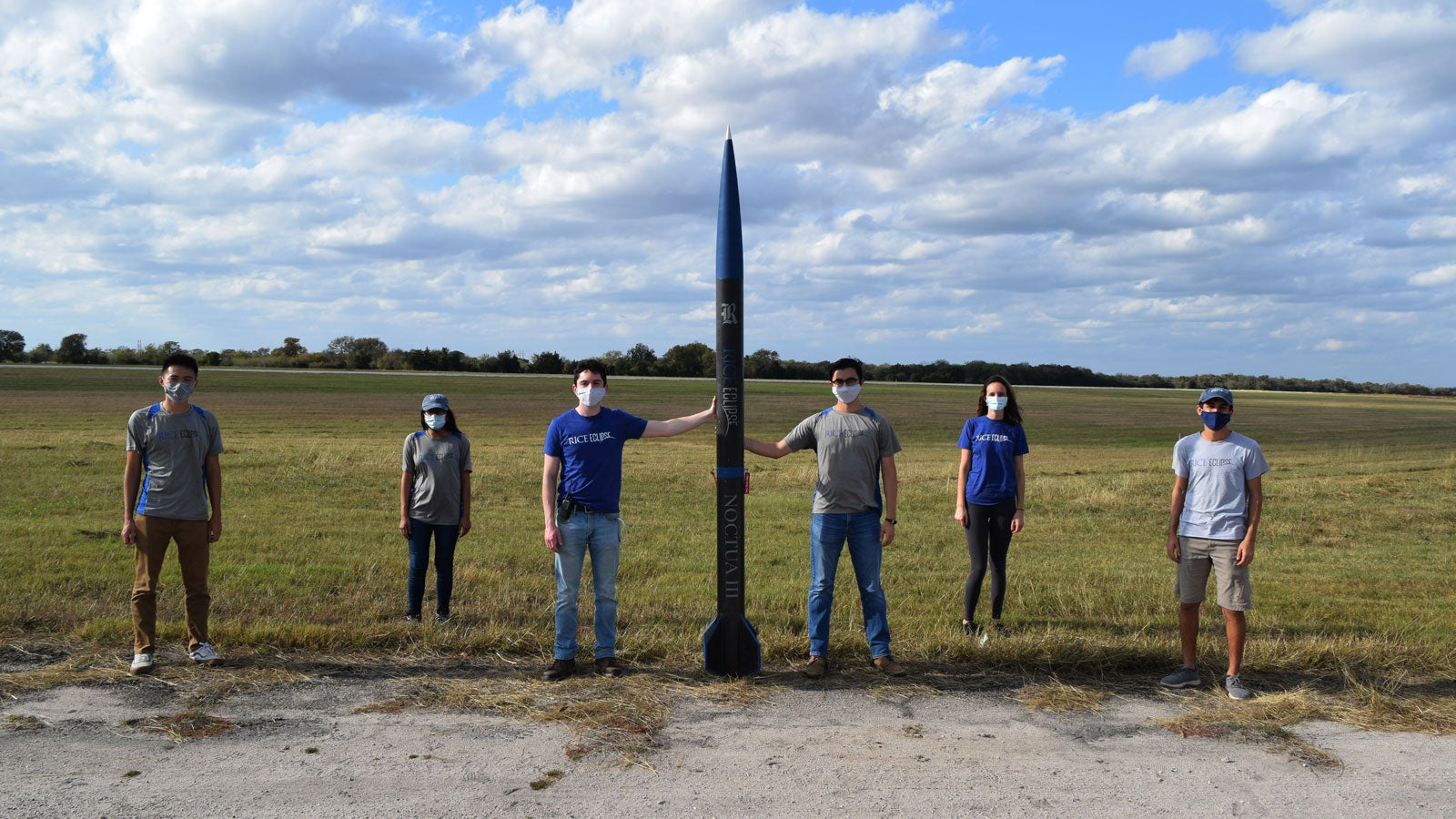Kimberly Rodriguez is a junior mechanical engineering major from Maracaibo, Venezuela. She is the Aerodynamics and Structures lead of the Rice Eclipse rocketry team student club. In this personal article, Rodriguez shares her experience participating in the Spaceport America Cup in Las Cruces, New Mexico, the largest intercollegiate rocketry competition in the world.
When I came to Rice University, I was interested in engineering, but I didn’t know that I would become fascinated with aerospace. Two of my O-Week advisors were very involved with Rice Eclipse and spoke highly of the team. I joined the club as a freshman and then got involved in the Structures and Recovery sub-teams for the competition rocket that year. In Rice Eclipse, I learned about design and machining techniques for a project that actually flew long before I learned it in class.
I liked the sub-team's work so much that I became the Structures lead during as a sophomore before advancing to Aerodynamics Lead this year. My job [on the team] is to manage the design, manufacturing, and testing of our rocket for the competition — overseeing several sub-teams that work on different parts of the rocket.
This year, Eclipse’s competition rocket is an unprecedented project for a Rice student team.

Named Athena after the Athenian owl on Rice’s academic seal, it is as a nod to it being Eclipse’s first competition rocket project led by a woman. Athena will fly to 30,000 feet and will be the first Eclipse rocket to break the sound barrier. No other Rice team has built a vehicle that has flown higher or faster.
"As a kid, I didn't have experience working with rockets of any type, so it's very exciting for me to be able to contribute and see this project all the way through to Spaceport 2021," said Dylan Rivera, mechanical engineering junior and Airframe Sub-team Lead. "The fact that we're doing this during a global pandemic makes it all the more memorable."
The COVID-19 pandemic has definitely made our work harder. The manufacturing of Eclipse’s rockets usually involves several people clustered around a relatively small component. My sub-teams normally held machining sessions in the OEDK with four or five people around a CNC mill, taking turns teaching new members how to machine. We can’t do that this year, but we have adapted our methods to keep everyone safe. Now my sub-team leads send out time slots for machining or lab work sessions, so team members can sign up for slots to keep the lab spaces under their safe capacity.
"Organizing a project of this size and completing it when some of the members like myself are remote and we have limited space and time is truly impressive," said Savannah Tiemann, chemical and biomolecular engineering sophomore and Composites Sub-team Co-Lead. "I'm so proud of how Eclipse has functioned as a team to build Athena given the circumstances."
I was worried I was asking too much of my sub-team leads this year with the condensed semester schedule and anxiety from the pandemic, but they’ve done great in finding ways to continue their work and educating their members while keeping everyone safe. One of my sub-team leads is remote and has done an amazing job staying connected with her team and her co-lead on campus.
"With almost all of my classes being online, the in-person facet of Eclipse is incredibly valuable. It's almost like it gives me a reason to be on campus," said Prithve Shekar, mechanical engineering sophomore and Certificates Sub-team Lead.
In all, I am very proud of how much my team has accomplished on Athena this semester. I’m also proud to be leading such a diverse team, which is often not the case on aerospace projects. Lastly, I did an internship this past summer at Boeing doing structures work for satellites as well, and my Eclipse experience was very helpful there.
Do you have a Rice Engineering student experience you’d like to share? Pitch us your story.

